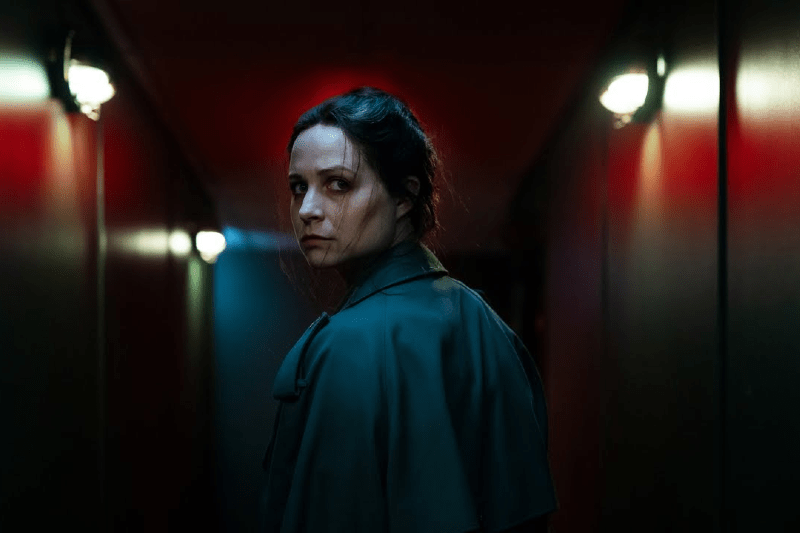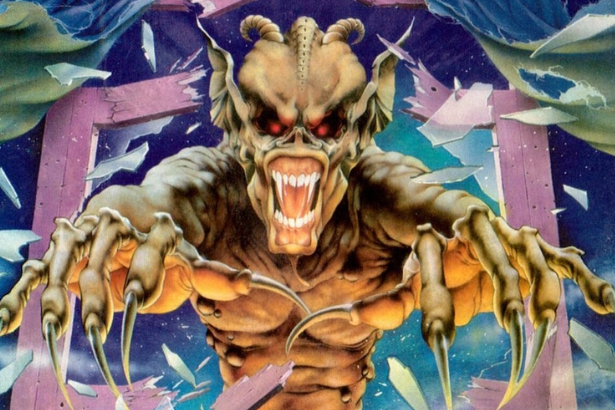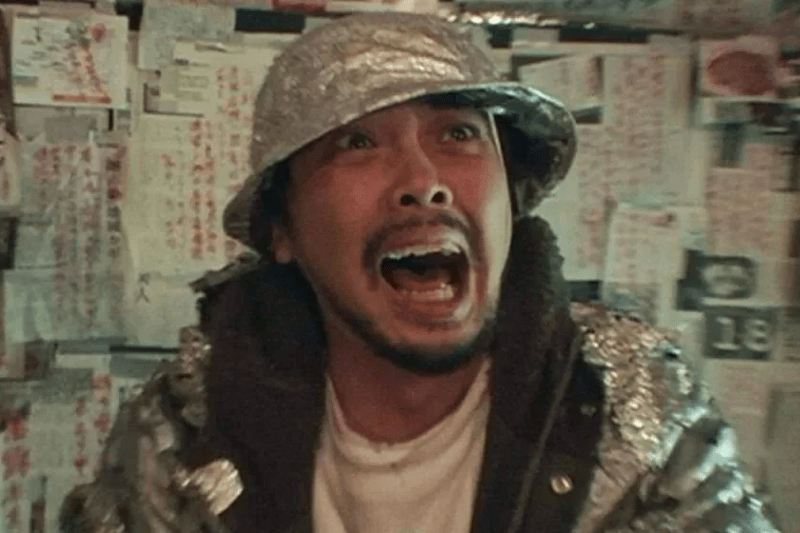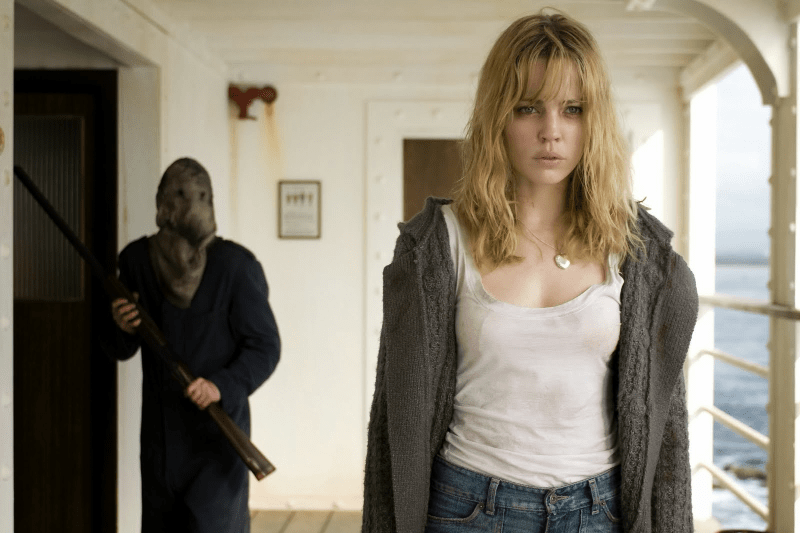What happens when our fears force us to turn a mirror on ourselves? At the height of the “video nasty” panic in 1980s England, good-intentioned censor Enid (Niamh Algar) navigates the complicated work of classifying VHS tapes. This is the repressed and frightened world created by Prano Bailey-Bond in the 2021 psychological horror Censor.
Early in the story, we learn that Enid has a secret. When she was a kid, she and her little sister went to play in the woods, and suddenly, her sister was gone. For years, Enid has been struggling to remember anything about that day, so when she is tasked to review a new video nasty, Enid is shocked when the brutal film’s lead actress—Alice Lee (Sophia La Porta)—brings out repressed memories about her sister. Soon she starts to believe the woman in the film is her sister Nina, perhaps kidnapped as a child by this mysterious filmmaker, Frederick North (Adrian Schiller).
When asked why a horror filmmaker would write a censor as her hero, Prano Bailey-Bond explained that she has always been fascinated by moral panics and how our boundaries can sometimes bleed into our relationship with others. Bailey-Bond says Enid “hates herself, and it’s good-intentioned.” We can understand that these characters’ tendencies for self-loathing and self-regulation make her the perfect messenger for moral panics such as the video nasties.
If you’re unfamiliar with the term "video nasty" moral panic, these were usually horror VHS tapes banned by the British Board of Film Classification (BBFC). The moral panic started with the publication of inflammatory newspaper articles by publishers such as The Sun and The Mirror. Much like the satanic panic in the USA, the video nasty panic preached that the horror films distributed in the—up to that point—unregulated VHS tapes were not only immoral and criminal, as they could influence people into committing violent crimes.
As Stanley Cohen talks about in his book Folk Devils and Moral Panics, it was through the conjoined action of the media, politicians, and moral crusaders like Enid that the Video Recordings Act—which was supposed to help the BBFC simply to classify films—became a weapon of censorship in 1984.
This mindset permeates the film. There is even a subplot where a news article accuses a man—who committed brutal murder—of having taken his cruel method of killing from a horror film that Enid herself passed as suitable for viewing. A media frenzy ensues, leading Enid to become even more remorseful, doubling down on her censorship. However, it’s only after Enid implements harsher limits in her work that it's discovered that the newspaper that published the article was lying, and the perpetrator hadn’t even watched the supposed film.
To Bailey-Bond, this circular mindset of censorship is the thing that attracted her to this story. If these films are as bad as people claim them to be, “what happens to the mind of the people who have to watch them all day long,” the filmmaker ponders in an interview for the Evolution of Horror podcast.
As the film progresses, Enid becomes more disturbed. She grows obsessed with finding her sister and the mysterious North, who made the film that triggered her memories. Slowly, as she digs deeper and starts to consume more and more films from the same director, hoping to find clues on her sister’s whereabouts, Enid’s memories start shifting, and the snippets between her and her sister become dark. Slowly, we come to believe it was Enid herself who hurt her little sister.
It is never really explained if these new memories are truly repressed moments from Enid's past or simply her mind being influenced by what she is watching. Soon, though, Enid is committed to finding the film director and her sister. It’s no longer enough to censor the results of a troubled mind—she must destroy the source of it all.
First, she talks to Doug Smart (Michael Smiley), the producer who brought the films to the BBFC office. As the two try to get information out of each other, the man tries to flirt with Enid, and when she attempts to distance herself from him, she accidentally pushes him into being impaled by an award on his desk.
In complete shock and with nothing left to lose, Enid takes the information she needs and rushes to find the film set the mysterious Frederick Noth might be working on. Upon arriving at the location, she discovers the director had been waiting for her. He had heard about her crusade against his films and thought she was the perfect person to play the final girl in one of them. Reality and fiction clash when Enid is thrown into the filmed scene.
She is then faced with the actress she believes to be her sister, and when another actor pretends to hurt her, Enid loses control and axes the man to death. The set becomes mayhem, and Enid threatens whoever gets in the way between her and her supposed sister.
She then kidnaps the actress and takes her to her parents. Because this way, they can return to being a “real family.” The film closes with Enid’s fantasy world and the real world merging into one. The image of the bloodied actress running in despair towards Enid’s parents is superimposed with the fairytale-like image of her in a clean white dress embracing them. All the while, Enid is on the other side of the road, smiling, covered in the blood of someone she just murdered.
For Bailey-Bond, this final image is the point of the whole story. According to her, some people are so afraid of discovering they are not as good as they hoped that they would rather repress and censor anything—or anyone—that might bring out a side of themselves they don’t want to know.
And as horror fans, we are very aware that—besides the silly fun these movies can be—horror films have a pivotal role in allowing us to explore our inner darkness and come to terms with the horror inside. But for people who buy into moral panics like the video nasties, the horror is just too much, and they can’t fathom that they themselves might be the monsters after all.







